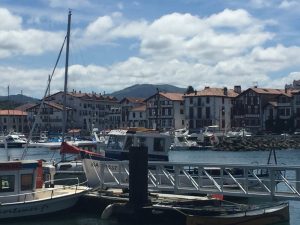
We’ve been in Saint Jean de Luz for the last three nights – a long stretch, I know – but it’s such a lovely place we couldn’t drag ourselves away until this morning.
Imagine a faded old seaside resort like Eastbourne or Great Yarmouth but add sunshine, great food, smiling families, culture – and did I say sunshine? Actually it’s nothing like Eastbourne or Great Yarmouth is it..? Sorry about that but hopefully you get the idea. A once-trendy resort for the well-off which has now seen better days, along the promenade, anyway. The main town is pristine, pedestrianised and perfect for the lazy holidaymaker who wants to have a stroll round the square looking at the artists or listening to the band playing in the bandstand, before taking a seat in an outside café or restaurant to be fed and watered within an inch of their life!
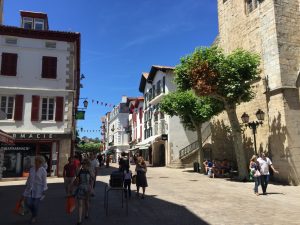 The only fly in the ointment is the tourist prices – something we weren’t used to after cheap & cheerful Portugal and Spain. €7.20 for two tiny thimbles of beer!
The only fly in the ointment is the tourist prices – something we weren’t used to after cheap & cheerful Portugal and Spain. €7.20 for two tiny thimbles of beer!
I’d stayed in the campsite last year with my biker chums on the way to our ferry at Santander so I knew what to expect; a sea view, pounding surf, a beachside bar and spotless facilities. There’s a lovely coastal walk into town – about a mile and a half away, which we walked one day then cycled the next. We were camped next to three French folks in a motorhome who’d brought their Harley-Davidson (or Hardly-Movingson as we call them) motorcycles on a trailer. I tried not to make any rude remarks, but made a point of wearing a different Triumph (i.e. proper motorcycle) T-shirt every day, which elicited scowls all round – excellent!
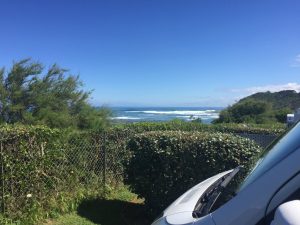
We’d had a good rest on our mini-break within a holiday within a big trip, but this morning it was time to move on. We consulted Mr Google for interesting places in Aquitaine around Saint Jean de Luz but moving in an Easterly direction; we’ve arranged to pop in again to see our friends in Najac as we cross France towards the Alps. They don’t know yet – we don’t want to give them too much time to make other arrangements if they know we’re coming to eat all their food again.*
That’s how we ended up in Espelette, a pretty town in French Basque Country. You know you’re in the Basque region by the shutters on the houses apparently. The neat white cottages all had red shutters, and I don’t think we’ve seen such a clean & tidy town on our trip so far. It’s almost Disney-like. There was a range of artisan shops selling local produce and artwork, but every single one of them had some sort of connection to the humble red pepper. Espelette seems to be the centre of the universe as far as peppers are concerned. They grow peppers. They eat peppers. They sell peppers. They hang peppers from their houses. They paint pictures of peppers and hang them on the wall. We saw one chap so distracted by the pepper theme that he reversed his car into a concrete trough of…you guessed it. (Really!)
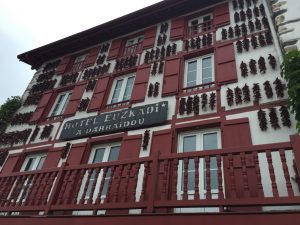
Thoroughly peppered-up, we had lunch in Vince, fresh baguettes with a local cheese (made with unpasteurised milk & red peppers, and I’m not joking) and moved on. Our second destination of the day was La Bastide-Clairence, about 45 minutes away. Another well-kept Basque village, Bastide was a little less Disney, consisting mainly of one long uphill main street (or downhill if you start at the other end, I suppose) with craft shops and coffee shops a-plenty.
We saw a wood carver working on some owl carvings, and a working forge with an area open to the public containing all the old tools, nails and screws, horseshoes (and goat shoes!) made on the premises for hundreds of years. If that sounds a bit touristy, it really isn’t – it was like somebody’s shed, with stuff lying about, little notes & diagrams from years ago, no labels or fancy info boards – I really liked it.
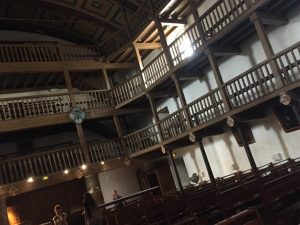
Our final visit of the day was to the Eglise Notre-Dame de l’Assomption. I’m ashamed to say it’s been some time since we darkened the doorway of a church, so we were keen to see how this compared to the magnificent cathedrals of Albi or Santiago de Compostela or the plain-on-the-outside but ridiculously ornate-on-the-inside churches of Bragança. I felt that this church in La Bastide-Clairence was one of the most homely and welcoming places of worship we’ve been to. It felt as though it really served its local community. Rather than gilded icons and intricate carvings, it had old paintings on the walls, plain pews and fascinating wooden balconies which hold only one row of worshippers. Around the outside was a cloister paved with family gravestones. Beneath were tombs holding the remains of four, five or six generations of Basque families, some of whom were only recently deceased. In the warm sunshine it made us pause and reflect how lucky we are to be here, and how short life can be for some. Get out there and get on with it folks – we’re not around for long.
*Don’t worry Cameron, just kidding – we’ll bring some cheese.
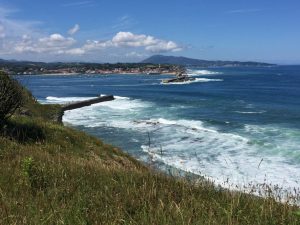
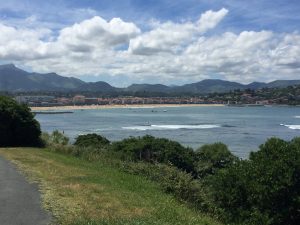
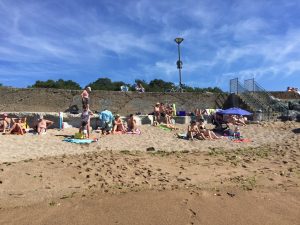
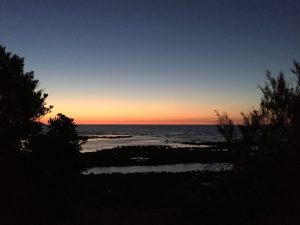
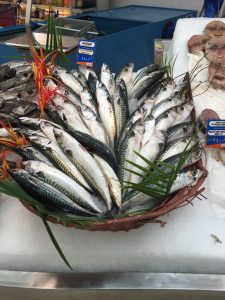
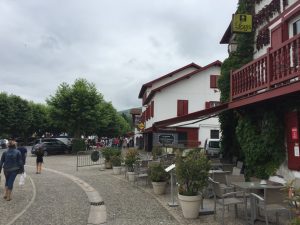
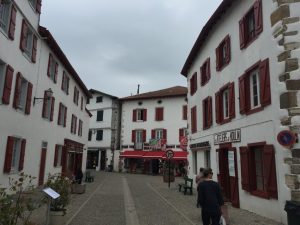
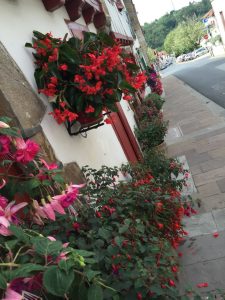
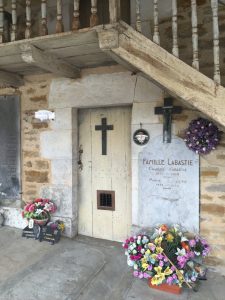
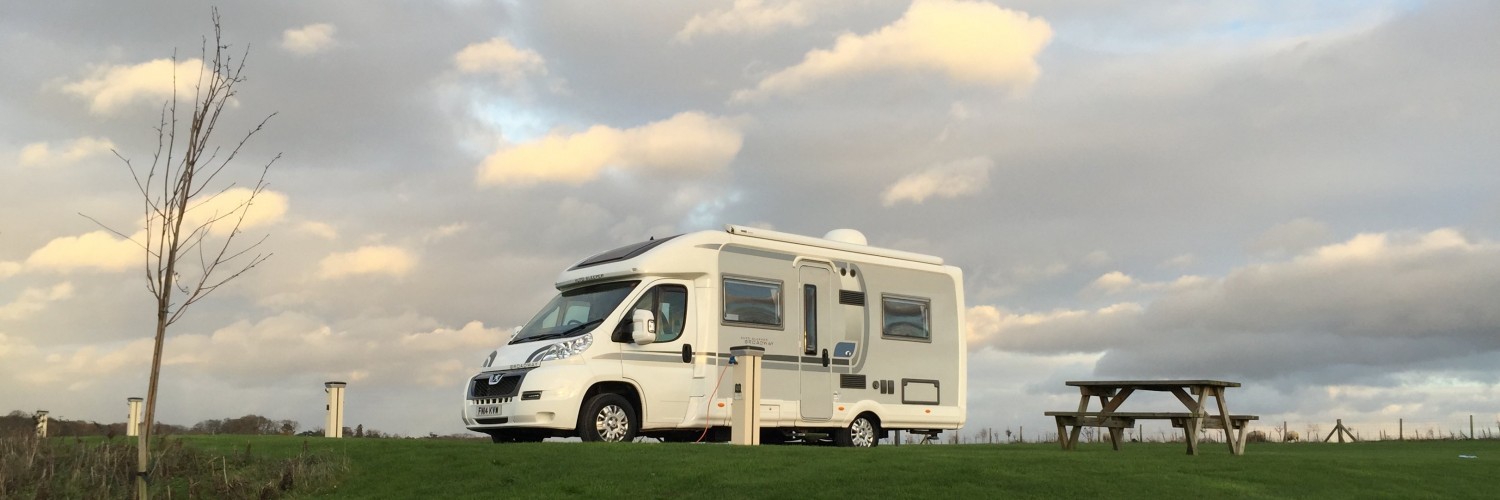
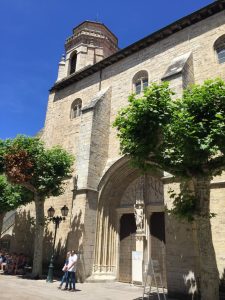
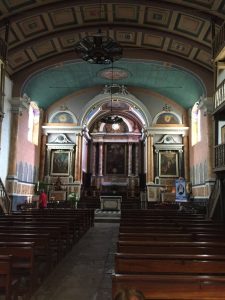
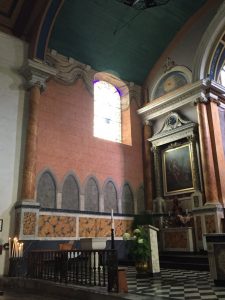
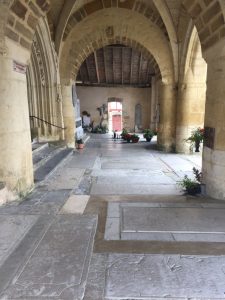
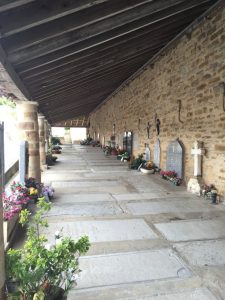
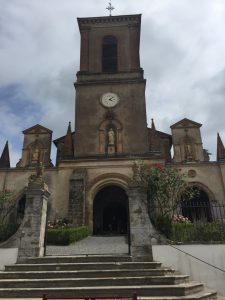

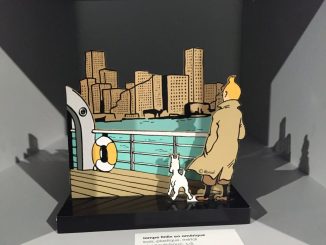
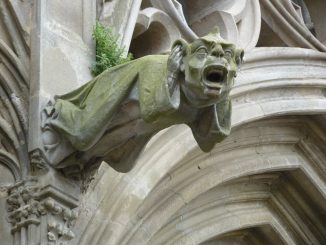
Leave a Reply